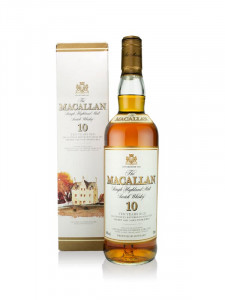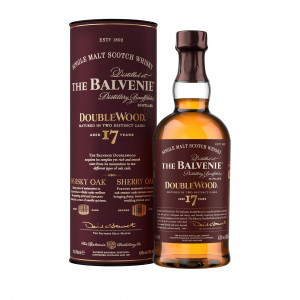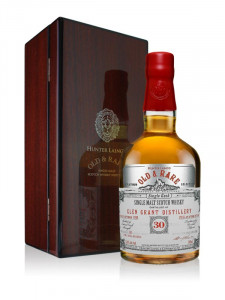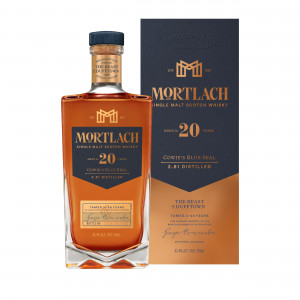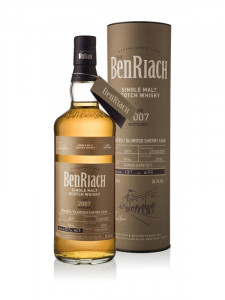Speyside Spirit

Oft, as much I enjoy a smoky island whisky there’s just something about a Speyside Malt that oozes class and quality.
That might be because they have enough practice making malts up there, I mean did you know Speyside is home to over half the distilleries in Scotland and has the greatest concentration of malt whisky producers! No bad considering it’s only a wee pocket of land in the North-East of Highland territory.

There are a few reasons why there are so many distilleries, apart from the stunning scenery; the rich and fertile ground provides tons of barley for malting, there’s a vast amount of rivers and burns which bring clear and cool water and the Speyside climate is ideal for the maturation process. The water from the River Spey has the lowest level of dissolved minerals than any other region in Scotland which makes it perfect for the mashing process.
Another reason some believe is that Speyside was a tough place to get to in the 19th Century which meant the old taxman found it difficult to reach so this made for many illicit distilleries. There’s always been something quite rebellious about Scotch whisky!

Speyside has always been at the center of the Scotch Whisky industry, I mean this was the region that sparked the first whisky explosion in the early 19th century. In 1822 King George IV made a famous trip to Edinburgh and it was then that he discovered the illegal whisky being produced in Speyside, specifically Glenlivet. However, it wasn’t whisky from the Glenlivet we know and love today, they weren’t founded until around 2 years after the King’s visit. It could have been one of the 40 or so distillers in the Speyside area at the time – none of them licensed of course.
The King simply needed to get his hands on more of the stuff so he King instructed his Royal Chamberlin, Lord Conyngham, to source a supply. News of the King’s new found fondness of Highland whisky, particularly from the Speyside region, travelled. Soon the whole nation were aware of the quality of whisky coming out of Speyside. As the King endorsed it Highland whisky became a fashionable drink among the aristocracy and throughout England.
But what makes a Speyside Malt distinctly Speyside?
Well traditionally any distillery getting its water from the River Spey can be called a Speyside but in terms of characteristics Speyside malts tend to be popular with those who have more sensitive palates due to the gentler notes. There’s something very sophisticated with a Speyside malt with the balance of sweet and floral aromas – Speyside malts tend to be the sweetest Scottish malts.
Now that’s not to say that these are the only characteristics, there are lot of Speyside distillers that age the liquids in fortified wine casks, particularly sherry. This makes for the dried fruit, Christmassy cake and nutty flavours we get from the likes of Macallan Rare Cask, GlenDronach 18 Year Old and Glenrothes Sherry Cask Reserve.
The Balvenie and Glenfiddich distilleries are on the same site using the same water yet produce very different whiskies. This just goes to show the diversity in Speyside whiskies but also that they won’t be pigeonholed with particular flavours.
Some of the most iconic whisky brands hail from the Speyside region with the likes of Macallan, Dalwhinnie, Glenlivet and the worlds best-selling single malt –Glenfiddich. These are all brands known for having “The Speyside style” yet they all have unique expressions that really differ from one another.
Let's take a look at my five favourite Speyside whiskies!
Macallan 10 Year Old
{{product_id="881"}}
This older style bottling of The Macallan 10 Year Old is one of the classic expressions from the distillery, matured exclusively in sherry casks from Jerez, Spain, and bottled at 40% abv.
Balvenie 17 Year Old Doublewood
{{product_id="236"}}
A double maturation of bourbon and sherry oak matured for a minimum of 17 years. For fans of the 12 year old, this really is a must.
The nose has vanilla fudge and honey, oak woods and apple blossom. The palate mulled fruits with cinnamon, some sweet sherbet and clotted cream fudge with a sweetly spiced honey and oakwood finish.
Glen Grant 30 Year Old Platinum old & Rare
{{product_id="958"}}
Distilled at Speyside's Glen Grant distillery in September 1988, this single cask expression has been matured in a refill hogshead for all of its 30 years. Bottled in October 2018 as part of the Platinum Old & Rare Selection from family-run independent bottler Hunter Laing & Co., only 205 bottles have been produced, each one at a natural cask strength of 52.4% abv.
I especially love the toffee and chocolate notes from this one. A really rich and warm expression.
Mortlach 20 Year Old Cowie’s Blue Seal
{{product_id="941"}}
Part of the refreshed line-up from 'the Beast of Dufftown', this expression from Mortlach has been matured exclusively in American oak ex-sherry casks, with a percentage of refill wood, and bottled at 43.4% abv. The oldest expression in the range, this 20-year-old is affectionately named 'Cowie's Blue Seal', in tribute to one of the very first bottlings of Mortlach dating back to 1909.
Benriach Batch 15 2007 10 Year Old (#3236)
{{product_id="833"}}
One of only 615 bottles charged from an Oloroso sherry butt in 2018, this Speyside single malt was distilled in May 2007 before spending 10 years maturing at BenRiach distillery.
The nose has apple and almond frangipane with a twist of orange peel served with creme brulee. The palate armagnac appears mid-palate bringing macerated white fruits and plums with ground nutmeg and traces of soft new leather.

Oft, as much I enjoy a smoky island whisky there’s just something about a Speyside Malt that oozes class and quality.
That might be because they have enough practice making malts up there, I mean did you know Speyside is home to over half the distilleries in Scotland and has the greatest concentration of malt whisky producers! No bad considering it’s only a wee pocket of land in the North-East of Highland territory.

There are a few reasons why there are so many distilleries, apart from the stunning scenery; the rich and fertile ground provides tons of barley for malting, there’s a vast amount of rivers and burns which bring clear and cool water and the Speyside climate is ideal for the maturation process. The water from the River Spey has the lowest level of dissolved minerals than any other region in Scotland which makes it perfect for the mashing process.
Another reason some believe is that Speyside was a tough place to get to in the 19th Century which meant the old taxman found it difficult to reach so this made for many illicit distilleries. There’s always been something quite rebellious about Scotch whisky!

Speyside has always been at the center of the Scotch Whisky industry, I mean this was the region that sparked the first whisky explosion in the early 19th century. In 1822 King George IV made a famous trip to Edinburgh and it was then that he discovered the illegal whisky being produced in Speyside, specifically Glenlivet. However, it wasn’t whisky from the Glenlivet we know and love today, they weren’t founded until around 2 years after the King’s visit. It could have been one of the 40 or so distillers in the Speyside area at the time – none of them licensed of course.
The King simply needed to get his hands on more of the stuff so he King instructed his Royal Chamberlin, Lord Conyngham, to source a supply. News of the King’s new found fondness of Highland whisky, particularly from the Speyside region, travelled. Soon the whole nation were aware of the quality of whisky coming out of Speyside. As the King endorsed it Highland whisky became a fashionable drink among the aristocracy and throughout England.
But what makes a Speyside Malt distinctly Speyside?
Well traditionally any distillery getting its water from the River Spey can be called a Speyside but in terms of characteristics Speyside malts tend to be popular with those who have more sensitive palates due to the gentler notes. There’s something very sophisticated with a Speyside malt with the balance of sweet and floral aromas – Speyside malts tend to be the sweetest Scottish malts.
Now that’s not to say that these are the only characteristics, there are lot of Speyside distillers that age the liquids in fortified wine casks, particularly sherry. This makes for the dried fruit, Christmassy cake and nutty flavours we get from the likes of Macallan Rare Cask, GlenDronach 18 Year Old and Glenrothes Sherry Cask Reserve.
The Balvenie and Glenfiddich distilleries are on the same site using the same water yet produce very different whiskies. This just goes to show the diversity in Speyside whiskies but also that they won’t be pigeonholed with particular flavours.
Some of the most iconic whisky brands hail from the Speyside region with the likes of Macallan, Dalwhinnie, Glenlivet and the worlds best-selling single malt –Glenfiddich. These are all brands known for having “The Speyside style” yet they all have unique expressions that really differ from one another.
Let's take a look at my five favourite Speyside whiskies!
Macallan 10 Year Old
This older style bottling of The Macallan 10 Year Old is one of the classic expressions from the distillery, matured exclusively in sherry casks from Jerez, Spain, and bottled at 40% abv.
Balvenie 17 Year Old Doublewood
A double maturation of bourbon and sherry oak matured for a minimum of 17 years. For fans of the 12 year old, this really is a must.
The nose has vanilla fudge and honey, oak woods and apple blossom. The palate mulled fruits with cinnamon, some sweet sherbet and clotted cream fudge with a sweetly spiced honey and oakwood finish.
Glen Grant 30 Year Old Platinum old & Rare
Distilled at Speyside's Glen Grant distillery in September 1988, this single cask expression has been matured in a refill hogshead for all of its 30 years. Bottled in October 2018 as part of the Platinum Old & Rare Selection from family-run independent bottler Hunter Laing & Co., only 205 bottles have been produced, each one at a natural cask strength of 52.4% abv.
I especially love the toffee and chocolate notes from this one. A really rich and warm expression.
Mortlach 20 Year Old Cowie’s Blue Seal
Part of the refreshed line-up from 'the Beast of Dufftown', this expression from Mortlach has been matured exclusively in American oak ex-sherry casks, with a percentage of refill wood, and bottled at 43.4% abv. The oldest expression in the range, this 20-year-old is affectionately named 'Cowie's Blue Seal', in tribute to one of the very first bottlings of Mortlach dating back to 1909.
Benriach Batch 15 2007 10 Year Old (#3236)
One of only 615 bottles charged from an Oloroso sherry butt in 2018, this Speyside single malt was distilled in May 2007 before spending 10 years maturing at BenRiach distillery.
The nose has apple and almond frangipane with a twist of orange peel served with creme brulee. The palate armagnac appears mid-palate bringing macerated white fruits and plums with ground nutmeg and traces of soft new leather.

 4.8/5 with 3,400+ reviews
4.8/5 with 3,400+ reviews
